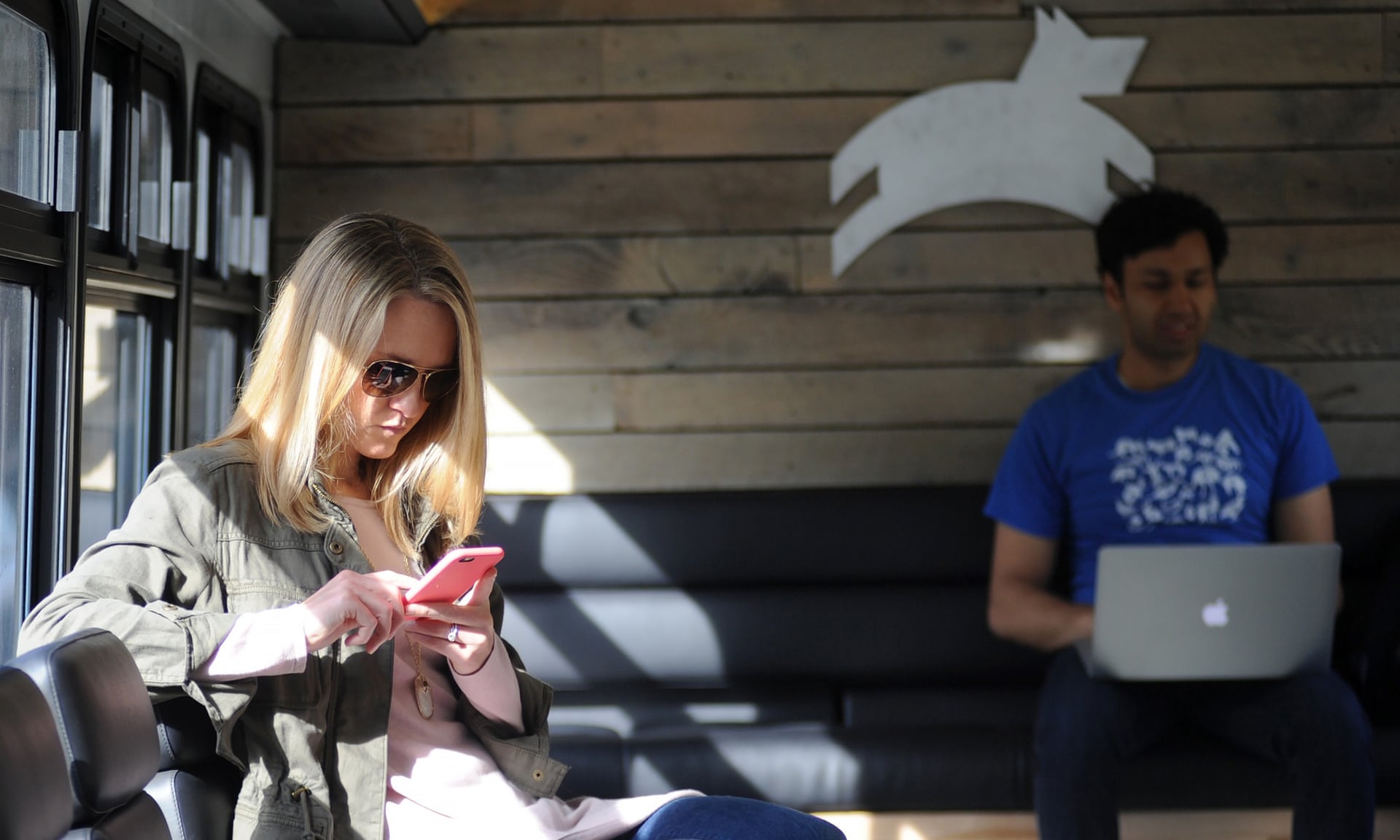During section this morning (4/22), we talked a lot about gentrification in the Bay Area, namely San Francisco and Santa Cruz, the causes, and the effects on the respective communities. We mentioned briefly this article, titled "All aboard San Francisco's hipster bus for leather seats, Wi-Fi and iced coffee." To be completely honest, I was tight-lipped about the article's content because I was planning on making this blog post and did not want to run out of things to say on this post.
The content of the article is the new private bus system serving 4 stops in the Marina district to 4 stops in the center of the Business district of San Francisco called "Leap." So, the first question is: how much for a ride on this leather-clad, Wi-Fi quipped, shuttle? $6, compared to the $2.25 for public Muni buses. Riders of Leap complain that Muni buses are "Muni buses are crowded and dirty" and, rather than make any sort of effort to improve existing public transit options in the city, prefer to pay almost three times as much money on a private shuttle.
Ultimately, I believe this is an issue of young, affluent (read: white) people gentrifying a city, but refusing to come face-to-face with the individuals they are gentrifying. Upon reading the article, I drew connections between this two-tiered transit system and the rise of chartered public schools in the US. Like The Guardian states, Leap is "accessible to anyone who downloads its smartphone app, has a credit card and is willing to pay nearly three times as much for a slicker, slightly faster and undeniably more pretentious version of a bus ride to work." Similarly, charter schools will accept anyone who applies to the school, given that students are not disabled and have their name drawn in high-stakes lotteries.
While on paper, both of these systems have valid and good intentions (getting cars off the roads, reducing traffic/offering free alternatives to public schools), both only serve to perpetuate segregation, gentrification, inequity, and ultimately fail to address the real cause of the issues they're trying to solve.

I couldn't agree with you more. I think this is something most people are guilty of whether or not they mean to be. We don't like to come face to face with the people we gentrify because it makes us feel uncomfortable, and things like the Leap transportation allow us to be out of touch with what we are doing.
ReplyDeleteEthan -
ReplyDeleteGreat follow-up to our in-class discussion, and great comparison linking LEAP to charter schools, as both public transportation and education are crucial components of urban society that split cause deep splits between those who believe that capitalism should be allowed to improve upon existing infrastructure (no matter who it prices out of the process), and those that believe that government exists to provide basic essentials such as these to its citizens. It would be interesting to look at how charter schools have been received and are being implemented in the city, and contrast this to the larger trends of gentrification we have been discussing in the course. Great work,
- T
I really like what you said about how these Leap users see the public buses as dirty and "rather than make any sort of effort to improve existing public transit options in the city, prefer to pay almost three times as much money on a private shuttle." I think this sort of opting-out or buying-out of situations or problems is something very common, basically solving the problem for a select few without addressing any root cause. I see the same thing happening with healthy or eco-friendly products - they are expensive and offer a way for the people who can afford them to buy-out of worrying about the detriments of unhealthy/unsustainable products, even though they are still a very real unaddressed problem.
ReplyDelete